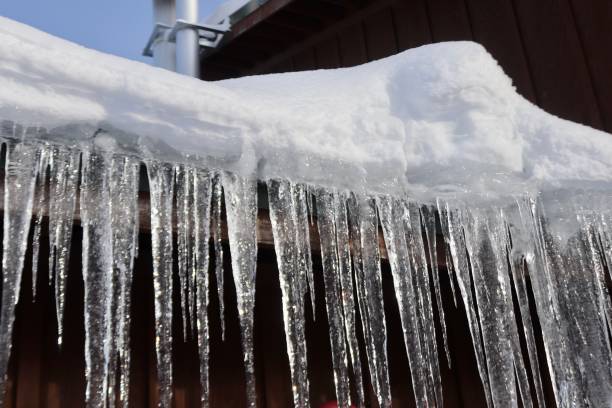The publisher is making a number of good points on the subject of How To Avoid Freezing Pipes as a whole in the content which follows.

Winter can wreak havoc on your plumbing, specifically by freezing pipes. Below's how to avoid it from happening and what to do if it does.
Intro
As temperatures drop, the danger of icy pipelines increases, potentially causing expensive repair services and water damage. Comprehending exactly how to avoid icy pipes is important for house owners in cold environments.
Understanding Icy Pipes
What creates pipelines to freeze?
Pipelines ice up when subjected to temperatures below 32 ° F (0 ° C) for extended durations. As water inside the pipelines ices up, it broadens, taxing the pipeline walls and possibly creating them to rupture.
Threats and damages
Frozen pipelines can lead to water interruptions, home damages, and expensive fixings. Burst pipelines can flood homes and cause comprehensive structural damages.
Indicators of Frozen Water Lines
Recognizing icy pipelines early can avoid them from bursting.
Just how to recognize icy pipelines
Search for decreased water circulation from faucets, uncommon odors or sounds from pipelines, and noticeable frost on subjected pipelines.
Avoidance Tips
Protecting at risk pipelines
Cover pipes in insulation sleeves or use warm tape to protect them from freezing temperature levels. Concentrate on pipes in unheated or outside locations of the home.
Home heating strategies
Maintain indoor rooms adequately warmed, specifically areas with plumbing. Open closet doors to allow warm air to circulate around pipelines under sinks.
Securing Outdoor Plumbing
Yard tubes and outside taps
Disconnect and drain pipes yard hoses prior to winter season. Install frost-proof spigots or cover outside taps with protected caps.
What to Do If Your Pipelines Freeze
Immediate actions to take
If you presume icy pipes, maintain faucets open up to eliminate stress as the ice thaws. Use a hairdryer or towels taken in hot water to thaw pipelines slowly.
Long-Term Solutions
Structural modifications
Consider rerouting pipelines far from exterior wall surfaces or unheated areas. Include additional insulation to attic rooms, basements, and crawl spaces.
Updating insulation
Purchase top notch insulation for pipelines, attics, and wall surfaces. Correct insulation aids preserve constant temperature levels and reduces the risk of icy pipelines.
Final thought
Stopping frozen pipelines calls for positive actions and quick actions. By understanding the causes, indications, and safety nets, property owners can secure their plumbing throughout cold weather.
6 Proven Ways to Prevent Frozen Pipes and Protect Your Home
Disconnect and Drain Garden Hoses
Before winter arrives, start by disconnecting your garden hoses and draining any remaining water. Close the shut-off valves that supply outdoor hose bibs and leave the outdoor faucet open to allow any residual water to drain. For extra protection, consider using faucet covers throughout the colder months. It’s also important to drain water from any sprinkler supply lines following the manufacturer’s directions.
Insulate Exposed Pipes
Insulating your pipes is an effective way to prevent freezing. Pipe insulation is readily available at home improvement stores and is relatively inexpensive. Pay close attention to pipes in unheated areas such as the attic, basement, crawl spaces, or garage. Apply foam insulation generously to create a buffer against the cold. You can also wrap your pipes in heat tape or thermostat-controlled heat cables for added warmth.
Seal Air Leaks
Inspect your home for any cracks or openings that could let in cold air. Seal any holes around the piping in interior or exterior walls, as well as the sill plates where your home rests on its foundation. Additionally, make sure to keep your garage door closed unless you’re entering or exiting. Leaving it open creates a significant air leak that can lead to frozen pipes.
Allow Warm Air Circulation
During cold snaps, it’s essential to allow warm air to circulate evenly throughout your home. Leave interior doors ajar to promote better airflow. Open kitchen and bathroom cabinets to help distribute heat consistently around the rooms. If you have small children or pets, be sure to remove any household chemicals or potentially harmful cleaners from open cabinets for safety.
Let Faucets Drip
A small trickle of water can make a big difference in preventing ice formation inside your pipes. When temperatures drop significantly, start a drip of water from all faucets served by exposed pipes. This continuous flow helps prevent the water from freezing. Additionally, running a few faucets slightly can relieve pressure inside the pipes, reducing the chances of a rupture if the water inside does freeze.
https://choateshvac.com/6-proven-ways-to-prevent-frozen-pipes-and-protect-your-home/

Do you really like reading up on Preventing and dealing with frozen pipes? Post feedback down below. We would be pleased to hear your suggestions about this write up. In hopes that you visit us again soon. If you enjoyed our blog entry please consider to pass it around. Thanks a lot for your time. Kindly come visit our website back soon.
Pricing